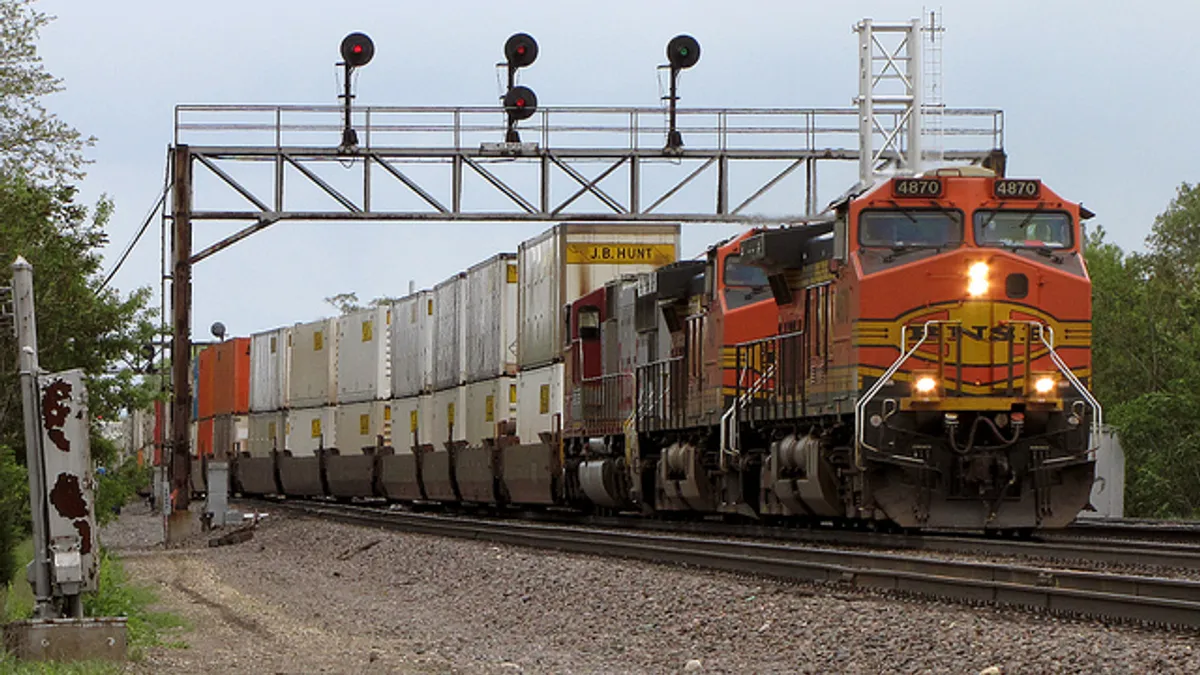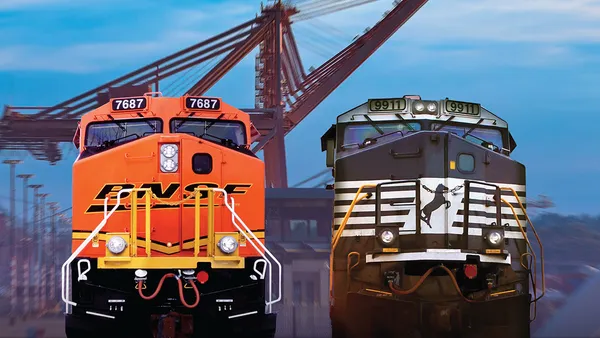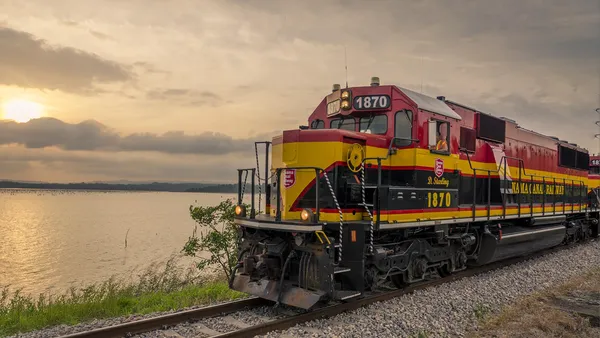Dive Brief:
- BNSF will invest $3.57 billion in its network in 2019, an 8% bump over last year's capital expenditure, according to a press release.
- The majority of the sum ($2.47 billion) will go to replace and maintain existing assets including 2,000 miles of track work, 535 miles of rail replacement and nearly 2.3 million rail ties. Just $340 million will go toward freight cars, locomotives and other equipment.
- Work will focus on BNSF's Northern and Southern Transcon routes, connecting Southern California with Chicago and the Pacific Northwest to Upper Midwest respectively — key routes for intermodal traffic.
Dive Insight:
"We spent almost a decade trying to figure out how we can make intermodal really a big part of the railroad industry," said outgoing BNSF chairman Matthew Rose at the Midwest Association of Rail Shippers (MARS) winter meeting last month, lauding the industry for finally making it a reality.
At that meeting, Rose warned that the good times in intermodal (the last two weeks of September 2018 set the all-time record) could be in jeopardy if the Surface Transportation Board (STB) decides to intervene in the largely unregulated corner of the rail industry. Companies need to keep the tracks in shape and freight moving out of busy hubs like Chicago to continue smooth service. (The intermodal boom has created ongoing congestion problems at Chicago's freight rail hub.) If this happens, Rose said, the STB is likely to maintain the status quo.
"If there's one calling card that the STB has is service," Rose said, expressing skepticism at BNSF's other major competitors that are streamlining their networks in the midst of transitions to precision-scheduled rail. BNSF, which is privately held, has resisted the pull of PSR.













